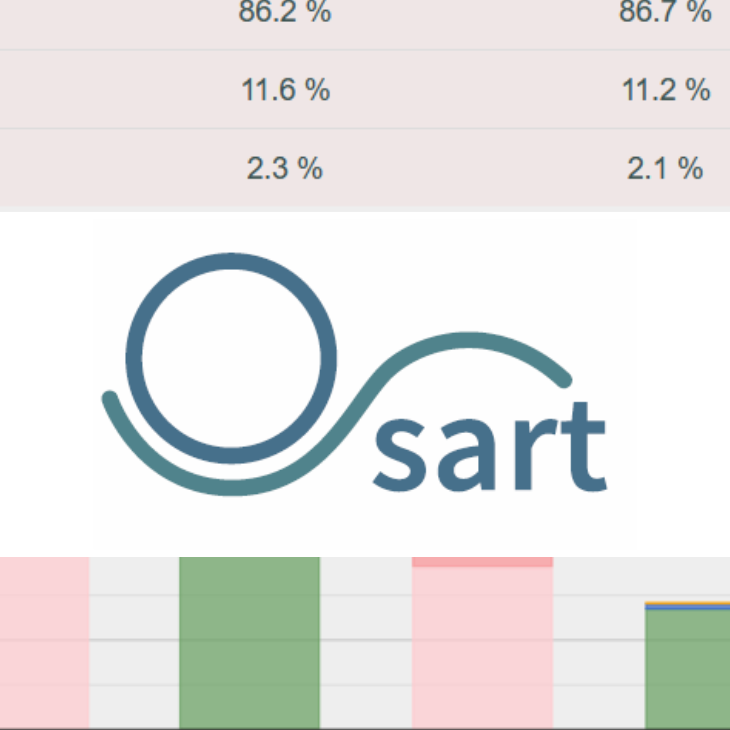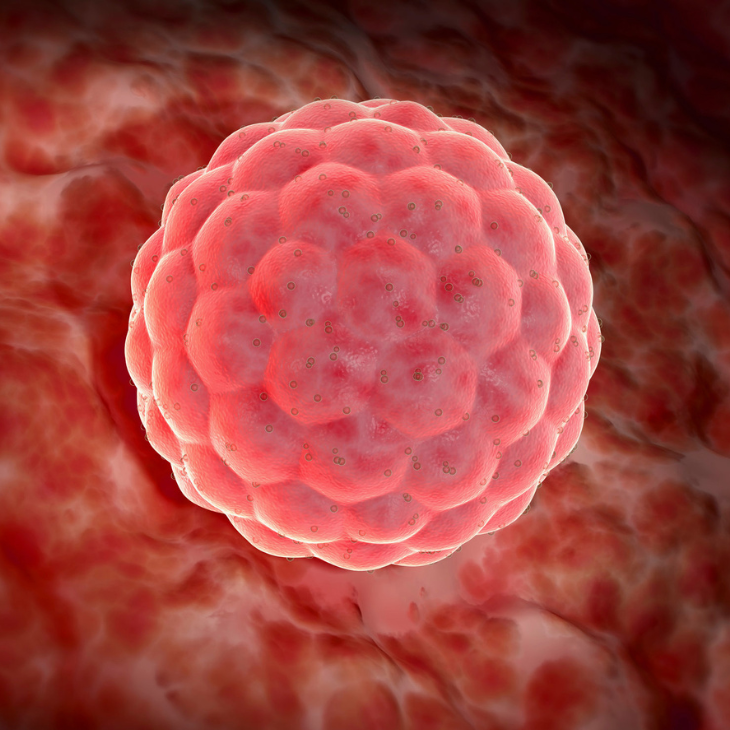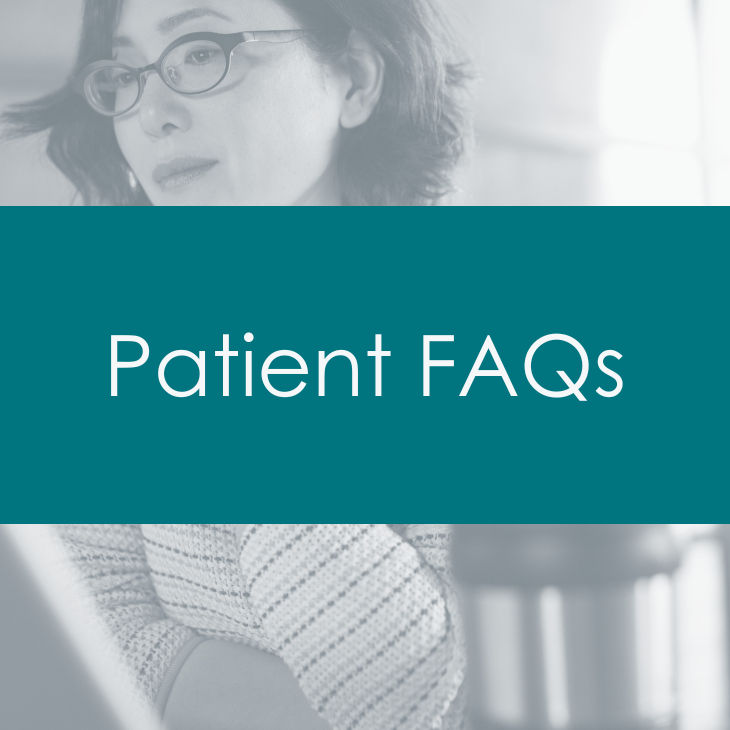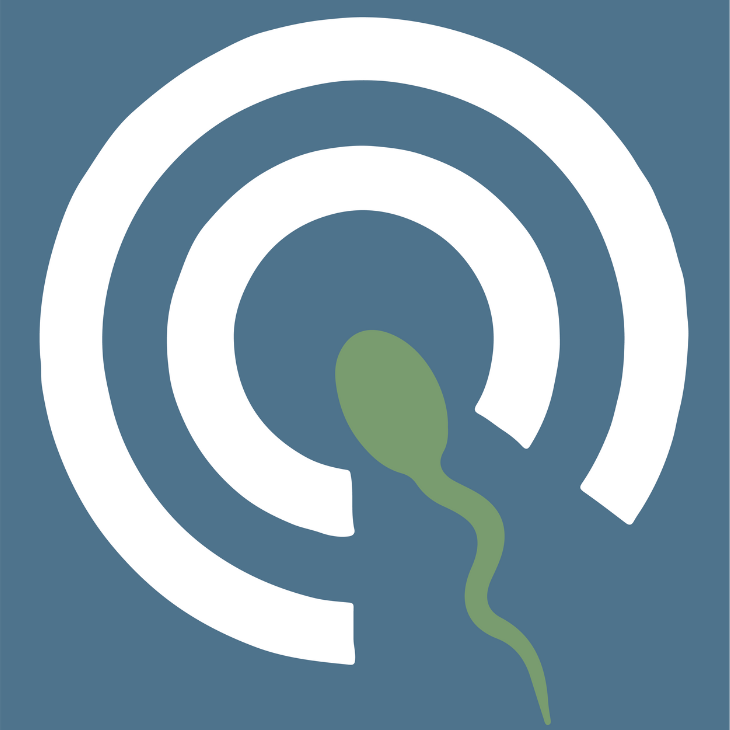
SART FAQ About IVF
Created by the Society for Assisted Reproductive Technology (SART), the following are answers to frequently asked questions concerning in vitro fertilization (IVF).
FAQ About IVF
In infertile couples where women have blocked or absent fallopian tubes, or where men have low sperm counts, in vitro fertilization (IVF) offers a chance at parenthood to couples who until recently would have had no hope of having a "biologically related" child.
In IVF, eggs are surgically removed from the ovary and mixed with sperm outside the body in a Petri dish ("in vitro" is Latin for "in glass"). After about 40 hours, the eggs are examined to see if they have become fertilized by the sperm and are dividing into cells. These fertilized eggs (embryos) are then placed in the women's uterus, thus bypassing the fallopian tubes.
IVF has received a great deal of media attention since it was first introduced in 1978, but it actually accounts for less than five percent of all infertility treatment in the United States.
Yes. IVF was introduced in the United States in 1981. Since 1985, when we began counting, through the end of 2006, almost 500,000 babies have been born in the United States as a result of reported Assisted Reproductive Technology procedures (IVF, GIFT, ZIFT, and combination procedures). IVF currently accounts for more than 99% of ART procedures with GIFT, ZIFT and combination procedures making up the remainder. The average live delivery rate for IVF in 2005 was 31.6 percent per retrieval--a little better than the 20 per cent chance in any given month that a reproductively healthy couple has of achieving a pregnancy and carrying it to term. In 2002, approximately one in every hundred babies born in the US was conceived using ART and that trend continues today.
The degree of services covered depends on where you live and the type of insurance plan you have. Fourteen states currently have laws that require insurers to either cover or offer to cover some form of infertility diagnosis and treatment. Those states are Arkansas, California, Connecticut, Hawaii, Illinois, Maryland, Massachusetts, Montana, New Jersey, New York, Ohio, Rhode Island, Texas and West Virginia. HOWEVER, the laws vary greatly in their scope of what is and is not required to be covered. For more information about the specific laws for each of those states, please call your state's Insurance Commissioner's office or to learn about pending insurance legislation in your state, please contact your State Representatives.
Whether or not you live in a state with an infertility insurance law, you may want to consult with your employer's director of human resources to determine the exact coverage your plan provides. Another good source of assistance is RESOLVE, an infertility patient advocacy and information organization.
The desire to have children and be parents is one of the most fundamental aspects of being human. People should not be denied insurance coverage for medically appropriate treatment to fulfill this goal.
Infertility often creates one of the most distressing life crises a couple has faced. The long-term inability to conceive a child can evoke significant feelings of loss. Coping with the multitude of medical decisions and the uncertainties that infertility brings can create great emotional upheaval for most couples. Many couples experience anxiety, depression, and feelings of being out of control or isolated. For more information, view the FAQs About the Psychological Component of Infertility.
Most eggs will fertilize when they are placed in a culture dish with several thousand normal sperm. This process is called “in vitro fertilization” or “IVF.” When there are not enough normal functioning sperm for IVF, fertilization will usually occur after a single live sperm is injected into each egg, termed “intracytoplasmic sperm injection” or “ICSI.” On rare occasions, fertilization does not occur even with ICSI, presumably because of a problem inherent to either eggs or sperm. In these cases, the use of donor sperm or donor eggs will usually result in fertilization. Your fertility specialist and IVF laboratory personnel will help you determine which approach is most likely to result in egg fertilization.
If you have stored embryos that you have decided not to transfer into your uterus to attempt pregnancy, you have four options for their final disposition. First, you can donate your embryos to another woman with fertility problems that you don’t know so that she can attempt pregnancy through a process called “anonymous embryo donation.” Second, you can donate your embryos to another woman that you do know so that she can attempt pregnancy though a process called “directed embryo donation.” Third, you can donate your embryos for laboratory research to help improve pregnancy rates for infertile couples in the future. Finally, you can ask that your embryos be thawed and discarded. In both of these last two situations, your embryos will not be transferred into another person and no child will be born as a result.
A response to ovarian stimulation depends on a number of different factors, the most important include available eggs, appropriate hormone levels, proper administration of any medications and lifestyle/environmental factors.
In order to respond to ovarian stimulation, a woman must have eggs available to respond; this is sometimes referred to as ovarian reserve. If a woman has diminished ovarian reserve (identified by a high blood levels of follicle stimulation hormone (FSH), low blood levels of anti Müllerian hormone (AMH) or a low antral follicle count on ultrasound), she may not have as robust (or any) response to stimulation. For these patients, an alternate stimulation protocol may be tried or donated eggs may be used (from a woman known or unknown to the patient).
It is possible that a woman does have the necessary eggs but lacks the appropriate pituitary hormones to respond. In this case, using a different medication- one which may contain both FSH and luteinizing hormone (LH) may allow for an optimal response.
Lifestyle factors can also affect a woman’s response to stimulation. Optimizing weight, diet and stress and cessation of use of tobacco, alcohol and recreational substances can also improve a response to ovarian stimulation.
Speak to your physician regarding improving your particular response to ovarian stimulation.
Preimplantation genetic testing (PGT) is a technique in which one or more cells is taken from an egg or embryo (fertilized egg) for testing to provide information about the genetic make-up of the rest of the cells in that embryo. In order to utilize PGT, couples must undergo in vitro fertilization (IVF), where the eggs (oocytes) are removed from a woman’s body and mixed with her partner’s sperm in a laboratory. The embryos which are created can be tested on Day #3 after egg harvest and then implanted back into the uterus on Day #5. Alternatively, the embryos can be frozen after the cells are removed for testing and implanted in a subsequent menstrual cycle.
Patients with many inherited familial diseases can have their embryos tested to determine its genetic make-up. Specifically, this would include patients with a history of single-gene disorders (such as cystic fibrosis or sickle cell anemia) and patients with a history of sex-linked disorders (such as Duchenne muscular dystrophy and Fragile X syndrome). In addition, even families in search of a bone marrow donor may be able to use PGT to bring a child into the world that can provide matching stem cells for an affected sibling.
Other patients may also decide to use genetic screening. For some patients with recurrent pregnancy loss, severe male factor infertility, advanced reproductive age or recurrent IVF treatment failures, genetic screening may be used. Genetic screening is different than other types of genetic testing because the testing is looking for any abnormality instead of a specific disease, and as a result is associated with higher rates of false results. At this time, ASRM considers genetic screening for this indication experimental.
If you are uncertain about genetic testing for you, speak with your physician about whether preimplantation genetic testing is right for you.
The first and second parties involved in a pregnancy are the male and female couple wishing to become parents. The three principal components required to achieve a successful pregnancy are a healthy egg, sperm and uterus. If any of these components are absent, then an option is to have a third party, or someone besides the couple, become involved. Third-party reproduction is when a couple uses a sperm donor, egg donor or a gestational carrier to help them become parents.
Each third party becomes involved in very distinct and completely different ways. A sperm donor’s involvement, for example, may simply be to produce a semen sample at a sperm bank, while a gestational carrier is committed for at least the nine months of pregnancy. Each has its own intricacies, processes, regulations and procedures that a certified IVF center can help a patient navigate through. It often involves a multi-team approach including the reproductive endocrinologist, the IVF team, an experienced attorney, a psychologist, third-party agencies, etc.
The purpose of ICSI is to assist the fertilization process when a man’s sperm count is abnormal. Whether it is because the number of motile sperm is very low or the morphology is excessively poor, the technique involves the delivery of a single sperm into a single egg. Since 1991, when it was first described, it has revolutionized the treatment of male infertility. Most clinics will recommend ICSI if there is a fear that poor fertilization may occur by traditional IVF where sperm are merely added to the egg culture dish. Accordingly, efforts are made to assess sperm by function or morphology to help determine those most likely to require ICSI. It is best to discuss this option with your clinic personnel prior to treatment.
A principal limitation to human reproduction is the natural loss of healthy eggs as a woman ages. At birth, a woman is born with her total reserve of eggs – no more are created. Over her lifetime, waves of them degenerate through a natural process called atresia so that by her mid thirties, we begin to see a greater difficulty to achieve a pregnancy and a higher chance of chromosomally affected children. By her early forties, the majority of women experience infertility and eventually a loss of reproductive capacity. This is due to the eventual loss of her remaining healthy eggs. Egg donation, like sperm donation, is a means to realize parenthood when the loss of gametes (i.e., egg or sperm) occurs. This may be due to the natural process of aging or may occur prematurely from other disease states or because of medical treatments for cancer, for example. When gametes are depleted, replacement by egg donation is a wonderful option to enable one to become a parent. There are many young women who want to help others overcome infertility. They serve as egg donors by expressing interest and then going through a rigorous screening process to ensure they are appropriate candidates. Typically, they provide a detailed health history of themselves and genetic history of their ancestors. Medical and psychological evaluations are performed, in addition to FDA mandated infectious disease testing. Once a patient has chosen to pursue egg donation, the process typically involves coordination of their two menstrual cycles so that the eggs may be retrieved, fertilization by the sperm of the patient’s partner and transfer into the patient’s womb can occur during the same month. The egg donor treatment cycles rate among the highest success in assisted reproduction.
In vivo hatching of the blastocyst is a critical component of the physiologic events culminating in implantation. Conversely, the failure to hatch may be one of the many factors limiting human reproductive efficiency. The clinical application of assisted hatching has been proposed as one approach toward the enhancement of implantation and pregnancy rates following in vitro fertilization. The assisted hatching procedure entails the creation of a gap in the outer area of the embryo called the zona. This is done either by drilling with an acid medium, by laser, or by using a piezomicromanipulator. Success rates following the use of assisted hatching in different ART programs have varied considerably. Well-designed studies suggest that assisted hatching might best be used in patients > 38 years old or with multiple prior failed IVF cycles.
The objective of infertility treatment should be the birth of a single, healthy child. Many of the treatment options presented to infertile couples, however, are associated with high risks of multiple gestation. Moreover, many couples view multiple gestation as desirable and are unaware of the risks they pose to both mother and babies. Couples should understand these potential risks before starting treatment.
The ability to limit the number of embryos or eggs transferred is an effective approach to limit multiple pregnancies. The Society for Assisted Reproductive Technology (SART) and the American Society for Reproductive Medicine (ASRM) have published guidelines recommending an optimal number of embryos for transfer based on patient age, embryo quality, and other criteria.
In the United States, the decision regarding the number of embryos to transfer is made jointly by the physician and the patients. This decision should be based upon the best interests of the patient and the future offspring. However, ART is centrally regulated in England, and no more than three embryos may be transferred in most circumstances. In Canada, a recent Royal Commission recommended the transfer of a maximum of three embryos.
The ultimate goal is to achieve a high pregnancy rate while transferring a single embryo. Recent laboratory improvements have allowed programs to transfer two embryos while maintaining acceptable pregnancy rates. Eventually, the transfer of one embryo will resolve the issues surrounding multiple pregnancies.
Some clinics see more than the average number of patients with difficult infertility problems. Some clinics are willing to offer ART to most potential users, even those who have a low probability of success. Others discourage such patients or encourage them to use donor eggs, a practice that results in higher success rates among older women. Clinics that accept a higher percentage of women who previously have had multiple unsuccessful ART cycles will generally have lower success rates than clinics that do not. In contrast, clinics that offer ART procedures to patients who might have become pregnant with less technologically advanced treatment will have higher success rates than clinics that do not.
To ensure that a patient receives high quality care, they should seek a doctor who has attained SART membership. The purpose of SART is to set the standards for the practice of IVF by providing its members with strict guidelines that optimize reproductive care for patients.
SART is the professional society for doctors and laboratory scientists who work together as a team to provide services in assisted reproduction. It is an affiliated society to the American Society for Reproductive Medicine (ASRM). SART is the place for these professionals to share information and experience. Many SART members meet on a regular basis at the annual ASRM meeting.
SART has rigorous requirements for membership. SART members must agree to:
- Report all their pregnancy data yearly. These data are subject to validation (a modified audit) by a team comprised of the CDC and the SART validation committee. This validation includes a site visit to the SART member’s clinic and review of the medical records.
- Embryo laboratory inspection and certification every two years by an outside agency, usually the Joint Commission on Accreditation of Healthcare Organizations (JCAHO) or the College of American Pathologists (CAP).
- Abide by all practice, laboratory, ethical, and advertising guidelines.
- All new practices must have a board-certified reproductive endocrinologist as medical director.
Patients seeking IVF services can be reassured that a SART member has satisfied these rigorous requirements.
Usually embryos are transferred on day 3 or 5. The day of transfer depends on embryo quantity quality, patient characteristics, and laboratory practices. You should discuss this decision with your physician.

Find an IVF Clinic
#StartWithSART
- SART clinics are committed to the highest quality standard of care.
- All clinics are required to advertise truthfully.
- All SART clinics accurately report outcomes so that you, the patient, can trust your provider.
- All SART clinics work with nationally accredited laboratories to ensure the best reproductive environments.
In Vitro Fertilization (IVF)
Find a Health Professional















